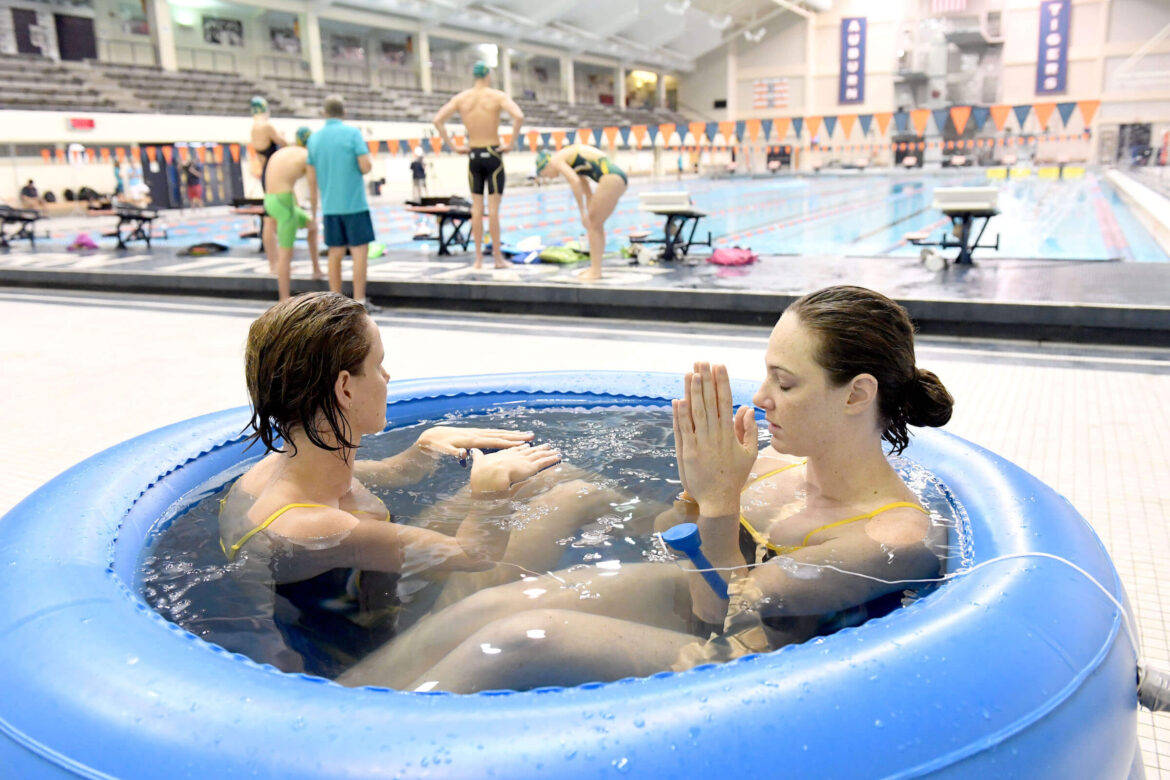Wellness Trends: What’s Available to Support Recovery?
In an age when wellness and health dominate conversations, endless fitness trends naturally follow. From new treadmill workout plans to protein-heavy diets, there are countless ways to try to improve your fitness game. In recent years, recovery trends have taken over the market. For swimmers, recovery is arguably just as important as training itself. So the question remains: Which recovery methods are worth it and which are just trends?
Cryotherapy
Cryotherapy, simply put, involves exposing the body–or specific parts of it–to extremely cold temperatures to speed up recovery and reduce soreness and inflammation in the muscles. It has proven effective in aiding recovery. According to a study published by the National Institutes of Health titled Whole-Body Cryotherapy in Athletes: From Therapy to Stimulation, “the majority of evidence supports effectiveness of WBC (whole-body cryotherapy) in relieving symptomatology of the whole set of inflammatory conditions that could affect an athlete.”
Although the practice is still being researched, it’s safe to say it’s not a fluke. The issue with cryotherapy lies more in its lack of accessibility. It’s not realistic for most athletes to have a cryochamber in their homes, as the majority cost upward of $30,000. However, there are various locations that offer cryotherapy, depending on where an athlete is located — including local gyms that offer cryo treatments or specialized cryotherapy facilities.
Wearable Technology
Wearable technology isn’t necessarily a new trend, but its role in recovery may be. As technology grows more advanced with time, the capabilities it has to report and communicate an athlete’s sleep, energy, and overall wellness levels have drastically increased in recent years. Devices such as the Oura Ring or Garmin Watches are some of the larger brands appearing in current wearable technology trends. Many of these devices offer athletes summarized statistics of their energy levels through metrics like “sleep scores” and “activity levels” and a specified “recovery level” following exercise.
Although swimmers, and athletes in general, are often acutely aware of their energy levels–it’s hard to ignore the feeling of running on low sleep or nutrition levels–a physical reminder on your wrist or phone of where you may be falling behind recovery wise can be helpful. Especially for student-athletes, who are often balancing more than just training, a reminder to prioritize recovery could be largely helpful in the long run. The issues with wearable technology for recovery efforts mostly have to do with accuracy issues. However, wearable technology has grown more accurate than ever and will likely continue to improve.
Cold Plunges
Cold plunges aren’t really a new concept, especially for athletes who have likely been in ice baths or seen teammates take them since they started competing at a higher level. With a similar science to cryotherapy, cold plunges involve submerging the body in extremely cold water to reduce inflammation and muscle soreness. The method has long been proven to have a positive impact on recovery, which is part of why there’s been such a craze for it in recent years. What’s new about it is how mainstream it’s become as a recovery method. What was largely an elite-level recovery method has been embraced by a wide variety of crowds, from gym-goers to college athletes.
Compression Technology
Compression is anything but a new topic for swimmers–most of us have been squeezing into tech suits since our ages hit double digits. We know the benefits that kind of wear can have for performance, but what about recovery? Compression technology uses pressure to improve circulation, reduce inflammation and speed up the overall recovery process. There are several forms of compression gear on the market, from recovery boots to sleeves and wraps that target specific muscle groups. Many athletes use compression after training or competition to help flush out lactic acid and reduce soreness the next day. It’s one of the more accessible recovery tools available — easy to use, travel-friendly and proven to make a difference. Compression remains a favorite among swimmers and the athlete community as a whole.
At the end of the day, recovery is a priority no matter how you approach it. Although new wellness and recovery trends will continue to pop up each year, the most effective methods are the ones that prioritize sufficient sleep and nutrition. Still, there’s no harm in jumping into a cold plunge or splurging on a fitness watch — you never know what it could do for you.
